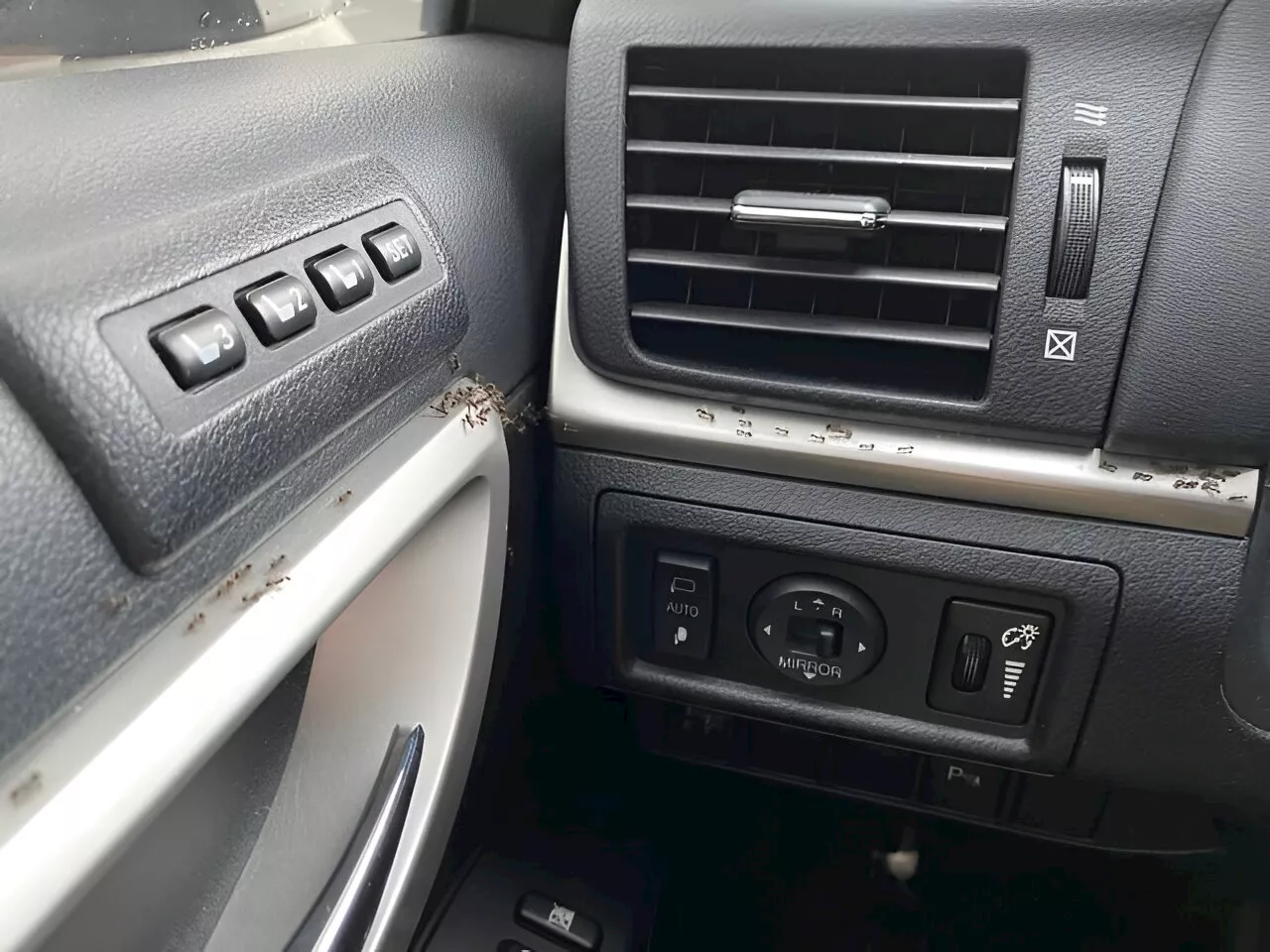The researchers concluded that invasive ants would mostly spread through the transport of agricultural, arboreal, and horticultural material.
Over six years, researchers documented 52 cases of ants hitching rides on vehicles in Taiwan, with invasive species spreading the most during warmer seasons.Insects like ants are adept at navigating various environments. Now, it appears they have mastered the art of hitchhiking as well. The ants gang up with their whole family and hop onto a car. Then they strive to find a new place to build their own home.
They categorized the ant species into arboreal, semi-arboreal, and ground-dwelling functional groups based on their nesting sites and foraging habits.The researchers documented 52 cases of active ant hitchhiking on cars between 2017 to 2023. Most of these were reported from Northern and Central Taiwan.
They mentioned one popular species—the black cocoa ant—which constituted nearly 60% of the reported cases. They explained that the parking duration of the vehicles on which the ants hitchhiked varied from a few hours to over a month. Over half of the hitchhiking incidents occurred within a day.
United States Latest News, United States Headlines
Similar News:You can also read news stories similar to this one that we have collected from other news sources.
 China views Taiwan's 'elimination' as national cause, Taiwan president saysChina views Taiwan's 'elimination' as national cause, Taiwan president says
China views Taiwan's 'elimination' as national cause, Taiwan president saysChina views Taiwan's 'elimination' as national cause, Taiwan president says
Read more »
 China views Taiwan’s ‘elimination’ as national cause, Taiwan president saysReuters
China views Taiwan’s ‘elimination’ as national cause, Taiwan president saysReuters
Read more »
 Invasive ants spread by hitchhiking on everyday vehiclesAnts might spread to new locations by stowing away on everyday vehicles. Previously, this was thought to occur mostly on agricultural equipment.
Invasive ants spread by hitchhiking on everyday vehiclesAnts might spread to new locations by stowing away on everyday vehicles. Previously, this was thought to occur mostly on agricultural equipment.
Read more »
 Invasive ants spread by hitchhiking on everyday vehiclesInsects are masters of transportation and get around by flying, crawling, swimming, burrowing, and even gliding. Now, ants have been observed using a new method of getting around: hitchhiking.
Invasive ants spread by hitchhiking on everyday vehiclesInsects are masters of transportation and get around by flying, crawling, swimming, burrowing, and even gliding. Now, ants have been observed using a new method of getting around: hitchhiking.
Read more »
 High fliers: Pleasure-seeking parrots are using aromatic plants, stinky ants and alcohol to preen themselvesBirds have been known to seek out pungent chemicals for various reasons. Some consume fermented fruits with gusto and suffer the ill effects. Others expose themselves to ants, but only the stinky kind. These ants produce useful antimicrobials and insect repellents.
High fliers: Pleasure-seeking parrots are using aromatic plants, stinky ants and alcohol to preen themselvesBirds have been known to seek out pungent chemicals for various reasons. Some consume fermented fruits with gusto and suffer the ill effects. Others expose themselves to ants, but only the stinky kind. These ants produce useful antimicrobials and insect repellents.
Read more »
 Researchers discover that ants from millions of years ago used the same sensory organs as modern antsA multidisciplinary team of scientists from several institutions in Japan, working with colleagues at the American Museum of Natural History, has found evidence that some types of ants that lived during the Cretaceous Period had sensory organs for communication similar to those used by many modern ant species.
Researchers discover that ants from millions of years ago used the same sensory organs as modern antsA multidisciplinary team of scientists from several institutions in Japan, working with colleagues at the American Museum of Natural History, has found evidence that some types of ants that lived during the Cretaceous Period had sensory organs for communication similar to those used by many modern ant species.
Read more »
